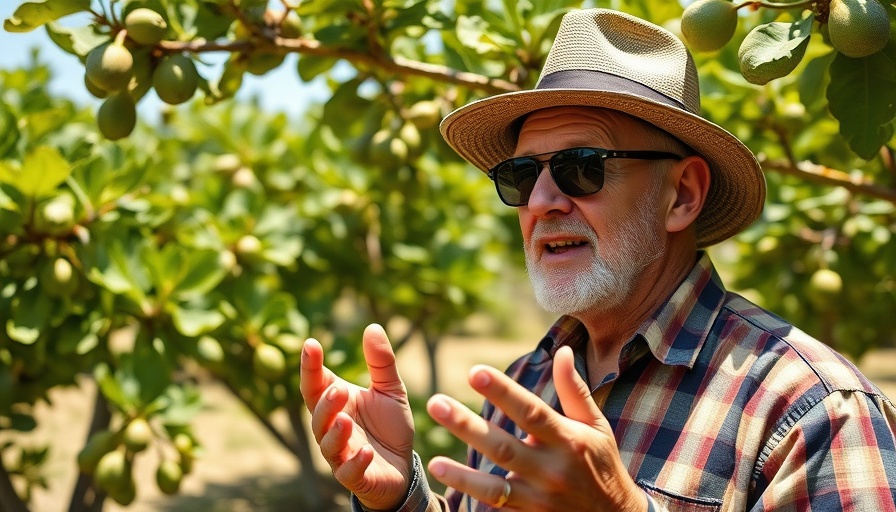
Digging In: Tips for Successful Fall Seedlings
As the days shorten and the air turns crisp, it’s time for gardening enthusiasts to shift focus toward fall crops. The insights from the video, titled How to Get Stronger Starts for Fall Seedlings: Brassicas, Onions, & Lettuce, provide valuable tips for nurturing those seedlings that will flourish as summer fades. Here’s a deeper dive into the strategies for successfully growing robust brassicas, onions, and lettuce.
In the video How to Get Stronger Starts for Fall Seedlings: Brassicas, Onions, & Lettuce, various methods of growing fall seedlings are discussed, prompting a deeper analysis of essential tips for success.
Understanding Brassicas: Spacing and Timing Matter
Brassicas—like broccoli, kale, and collards—are cooler weather vegetables that require specific attention as seedlings. One crucial takeaway is the importance of spacing. Planting brassicas in small trays can lead to overcrowding, hindering their growth. The general recommendation is to plant one seed per cell in a smaller cell configuration, ensuring that they have adequate room to develop without competing. An early thinning of seedlings is also key; removing excess sprouts can boost the health of the remaining plants.
The timing of planting is just as essential. Brassicas usually require a bit of time—roughly six weeks—to grow strong enough for transplanting. By being aware of their growth rate, gardeners can plan their planting schedules more effectively, synchronizing direct sowing in the garden with the seasonal weather.
Onions: The Double Approach
When it comes to onions, the comparison between tray-grown and raised-bed methods highlights an intriguing dynamic. Onions can tolerate some crowding, allowing for a more flexible planting approach compared to brassicas. For instance, planting onions in bands allows gardeners to maximize space while still yielding plenty of seedlings. Unlike brassicas that need to be thinned early, onions thrive even when planted more densely, giving them a competitive edge.
However, even within this flexibility, it’s vital to keep watering frequency in mind. Seedlings grown in trays tend to dry out faster than those in a raised bed, making daily watering crucial for developing healthy plants.
Lettuce: The Fast and Fabulous
Lettuce is the quickest-producing plant among the group. It's fascinating how quickly it can develop into a ready-to-harvest transplant—often only a few weeks. Timing lettuce planting correctly is pivotal; it’s better to start lettuce shortly before the cool weather rather than getting ahead of yourself and trying to plant in heat. By understanding the growth cycle of lettuce, gardeners can enjoy fresh, crisp heads without the stress of battling harsh summer conditions.
The Importance of the Gardening Environment
The video touches on the importance of maintaining a controlled environment. For instance, seedlings grown in a greenhouse tend to outperform those in raised beds due to factors such as consistent watering and protection from elements. However, the real challenge lies in nurturing these seedlings until they're ready for the garden, and using trial and error can help refine garden strategies.
Common Challenges and Solutions
Starting seedlings can present its own set of challenges, such as keeping the seed media moist and ensuring young plants develop strong root systems. Using a spray bottle to mist seedlings daily can create a moisture-rich atmosphere without oversaturating the soil. Understanding the varying needs of each type of seedling allows for tailored care—vital for ensuring healthy growth.
Ready, Set, Plant!
The insights from the video offer valuable guidance for gardening enthusiasts eager to plant for fall. From choosing the right species to understanding watering schedules and timing for optimal growth, every bit of knowledge can lead to a lush and fruitful garden this season. As you embark on your own fall gardening journey, remember these tips to make the most of your seedlings and embrace the joys of cultivating your fresh vegetables.
If you're looking to enhance your gardening knowledge further, consider seeking resources like specialized gardening courses or community gardening workshops. The more informed you are, the more successful your gardening can be!
 Add Row
Add Row  Add
Add 




Write A Comment